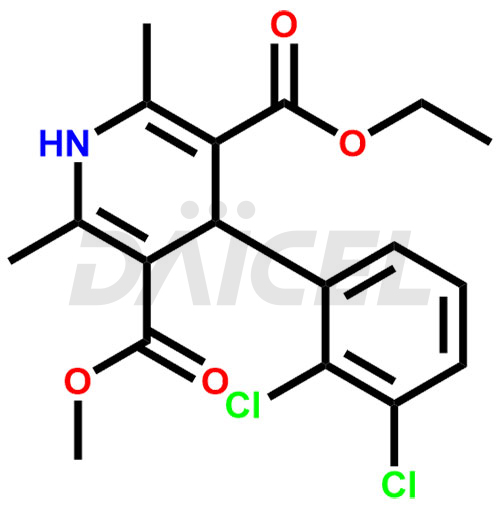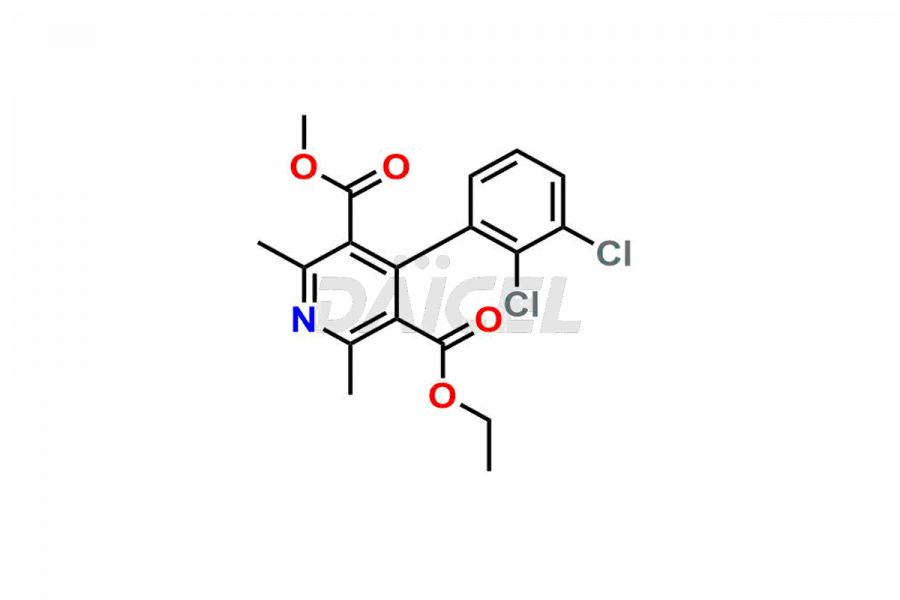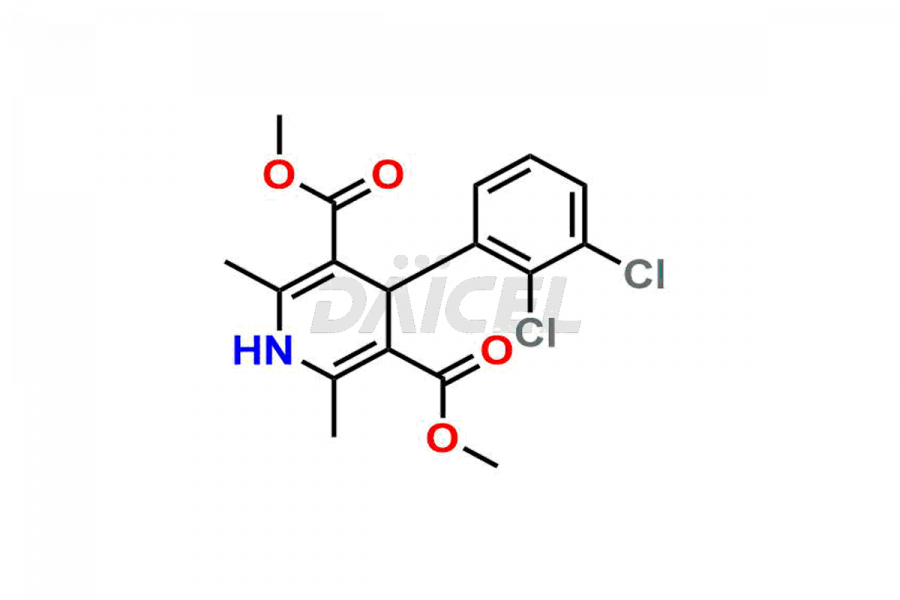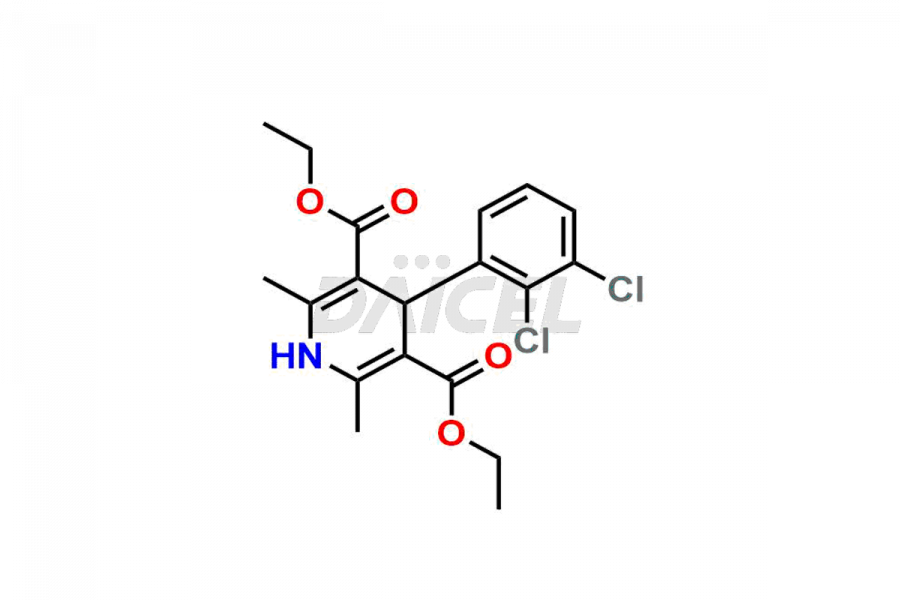Felodipine
General Information
Felodipine Impurities and Felodipine
Daicel Pharma specializes in synthesizing impurities for Felodipine, an active pharmaceutical ingredient. We offer crucial impurities such as Dehydro Felodipine, Felodipine 3,5-Dimethyl Ester, Felodipine EP Impurity C, and Methyl 2-(2,3-dichlorobenzylidene)-3-oxobutanoate, which play a vital role in evaluating the purity, and safety of Felodipine. Daicel Pharma also provides custom synthesis of Felodipine impurities to meet specific client needs, and we offer worldwide delivery options.
Felodipine [CAS: 72509-76-3], a calcium channel-blocking agent of the dihydropyridine class, reduces the contractility of the heart and lowers blood pressure. Felodipine finds application in managing hypertension and angina pectoris. Its therapeutic effects encompass calcium channel blockade, antihypertensive properties, vasodilation, and anti-arrhythmic effects.
Felodipine: Use and Commercial Availability
Felodipine, an FDA-approved medication for hypertension, belongs to the dihydropyridine class of calcium channel blockers. It effectively reduces blood pressure and decreases the risks associated with cardiovascular morbidity and mortality. Moreover, Felodipine ER is useful as an adjunctive therapy for individuals with severe hypertension that remains uncontrolled despite treatment with beta-blockers and diuretics. The drug is available under Plendil.
Felodipine Structure and Mechanism of Action 
The chemical name of Felodipine is 3-Ethyl 5-methyl 4-(2,3-dichlorophenyl)-2,6-dimethyl-1,4-dihydropyridine-3,5-dicarboxylate. Its chemical formula is C18H19Cl2NO4, and its molecular weight is approximately 384.2 g/mol.
Felodipine prevents voltage-dependent calcium currents in vascular smooth muscle and myocardial cells. It causes dilation of the main coronary and systemic arteries, thus lowering blood pressure.
Felodipine Impurities and Synthesis
Felodipine impurities are unintended substances that may be present in Felodipine. They can arise during the manufacturing process1 or storage may affect the drug’s quality, efficacy, and safety. The formation of impurities in Felodipine can result from degradation, interaction with excipients or packaging materials, or impurities in raw materials. Analytical methods such as chromatography and spectroscopy help detect and quantify these impurities. Stringent control measures are implemented during the manufacturing process to minimize impurity formation and ensure the quality of Felodipine.
Daicel Pharma, in adherence to cGMP standards, operates an analytical facility where we prepare Felodipine impurity standards like Dehydro Felodipine, Felodipine 3,5-Dimethyl Ester, Felodipine EP Impurity C, and Methyl 2-(2, 3-dichlorobenzylidene)-3-oxobutanoate. We offer a comprehensive Certificate of Analysis (CoA) for these impurities, providing a detailed characterization report. The CoA includes data obtained through techniques, 1H NMR, 13C NMR, IR, MASS, and HPLC purity analysis. Upon request, we give additional data like 13C-DEPT. We can synthesize unknown Felodipine impurities or degradation products. Each delivery has a comprehensive characterization report.
References
FAQ's
References
Frequently Asked Questions
What is the purpose of analyzing Felodipine impurities?
Analyzing Felodipine impurities helps ensure product quality, safety, and adherence to regulatory standards.
Can Felodipine impurities be eliminated?
While efforts are ongoing to minimize impurity formation, impurities' complete elimination may not always be possible.
Which solvent helps in analyzing Felodipine impurities?
Methanol is the solvent used for analyzing the majority of impurities in Felodipine.
How should Felodipine impurities be stored in terms of temperature?
The recommended temperature to store Felodipine impurities is at a controlled room temperature, within 2-8 °C.
Note: Products protected by valid patents by a manufacturer are not offered for sale in countries having patent protection. The sale of such products constitutes a patent infringement, and its liability is at the buyer's risk.





